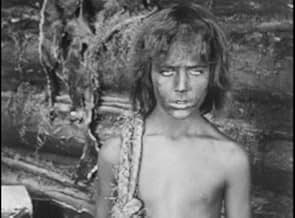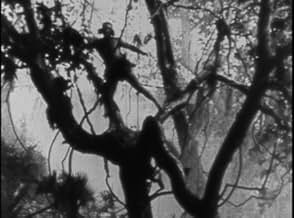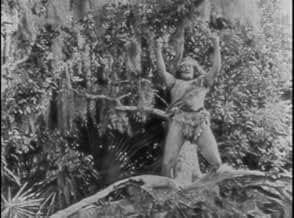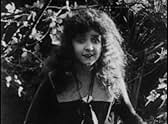Allevato da una scimmia, l'erede dei Greystokes diventa uno delle scimmie. Quindi, il dottor Porter organizza una spedizione di salvataggio e la sua figlia, Jane, cattura la sua attenzione. ... Leggi tuttoAllevato da una scimmia, l'erede dei Greystokes diventa uno delle scimmie. Quindi, il dottor Porter organizza una spedizione di salvataggio e la sua figlia, Jane, cattura la sua attenzione. Tarzan ha trovato il compagno perfetto?Allevato da una scimmia, l'erede dei Greystokes diventa uno delle scimmie. Quindi, il dottor Porter organizza una spedizione di salvataggio e la sua figlia, Jane, cattura la sua attenzione. Tarzan ha trovato il compagno perfetto?
- Regia
- Sceneggiatura
- Star
Madame Sul-Te-Wan
- Esmeralda - Jane's Maid
- (non citato nei titoli originali)
Stellan Windrow
- Tree-Swinging Tarzan
- (non citato nei titoli originali)
Recensioni in evidenza
...because of his already established reputation as a Hollywood strong man (e.g. his role as the Mighty Man of Valor in the 1916 DW Griffith classic "Intolerance").
Also, the image of Tarzan in 1918 was not that of a lithe gymnast like Christopher Lambert in "Greystoke", but of a man powerful enough to wrestle lions. Strength equalled bulk.
There's an interesting piece of trivia attached to that movie and Uganda (that's in East Africa) where I'm now based. There's a popular myth around here that the 1918 version of "Tarzan of the Apes" was filmed on the northern shores of Lake Victoria. In fact it was shot, I believe, in Louisiana.
Also, the image of Tarzan in 1918 was not that of a lithe gymnast like Christopher Lambert in "Greystoke", but of a man powerful enough to wrestle lions. Strength equalled bulk.
There's an interesting piece of trivia attached to that movie and Uganda (that's in East Africa) where I'm now based. There's a popular myth around here that the 1918 version of "Tarzan of the Apes" was filmed on the northern shores of Lake Victoria. In fact it was shot, I believe, in Louisiana.
After a shipboard mutiny forces Lord and Lady Greystoke into the uncharted African Jungle, Lady Greystoke gives birth to a boy. The parents die soon after, and the boy (Gordon Griffith) is raised by a family of "apes". He learns to live and fight like them, but also learns how to read and right from escaped slave Binns (George B. French), who heads back to Europe. Binns eventually convinces enough people that young Greystoke is still alive, and brings an expedition back to find him years later. The boy has now grown into the man known as Tarzan (Elmo Lincoln), Lord of the Jungle. When he sets eyes on Jane Porter (Enid Markey), it's love at first sight, and he rescues her from a number of perils. Also featuring Thomas Jefferson (!).
Filmed in Louisiana, this proved a hit, despite only adapting the first half of Burroughs' novel. A quick sequel, The Romance of Tarzan, was released later the same year but has since been lost. Lincoln, who had played a scary guard in Griffith's Intolerance, makes for an equally scary looking Tarzan, big and beefy, wearing a headband and an over-the-shoulder fur onesie. His Tarzan "yell" consists of him raising his fists in the air and making an insane face. The "apes" in Tarzan's family are people in weird monkey suits, with a real chimp thrown in occasionally to make things even weirder. There's also a really bad gorilla suit, as well as a real lion which one source I have says was actually killed by Lincoln on screen. There's enough strange stuff here to keep the viewer's interest, along with a brief (under an hour) running time.
Filmed in Louisiana, this proved a hit, despite only adapting the first half of Burroughs' novel. A quick sequel, The Romance of Tarzan, was released later the same year but has since been lost. Lincoln, who had played a scary guard in Griffith's Intolerance, makes for an equally scary looking Tarzan, big and beefy, wearing a headband and an over-the-shoulder fur onesie. His Tarzan "yell" consists of him raising his fists in the air and making an insane face. The "apes" in Tarzan's family are people in weird monkey suits, with a real chimp thrown in occasionally to make things even weirder. There's also a really bad gorilla suit, as well as a real lion which one source I have says was actually killed by Lincoln on screen. There's enough strange stuff here to keep the viewer's interest, along with a brief (under an hour) running time.
This is the first and oldest Tarzan movie ever made, as far as I know. Interesting mainly for that point. For the rest, I will always prefer Johnny Weissmuller as the Tarzan character, and I suppose I am not the only one to think like this. Elmo Lincoln could have been replaced by a more convincing actor, more athletic. OK, it tries to speak of the true, genuine story of Tarzan, according to the Edgard Rice Burrough's novel, as Hugh Hudson did in 1984. This is a good point that can justify to watch this rare item, xanks to TCM. This is also a shame that so many features fromt he silent era are now lost forever.
At this early point in American film history, Tarzan of the Apes was an instant success. Elmo Lincoln was perhaps the best actor at the time for the role. It's a fairly straight forward telling of the novel, tho Edgar Rice Burroughs was frequently on the set in an advisory role and his input was seldom utilized. In the books, Tarzan was quite the self-made scholar and this was barely touched upon in the film. For 1918, this turned out to be an excellent film, parts of which still hold up today. It's a solid 7 out of 10, and well worth seeing.
This original silent version of the Lord of the Apes is perhaps the truest screen representation of the way Tarzan is envisioned in the books by Edgar Rice Burroughs. It is seems very crude but really isn't. It follows the first story (in as much as it can in the limited time of the feature) very closely. Elmo Lincoln, while no Adonis, is very adequate in the role. He's not Johnny Weissmuller...but then Johnny didn't really look all too much like Tarzan should have either.
Lo sapevi?
- QuizEdgar Rice Burroughs sold the film rights for "Tarzan of the Apes" to the National Film Corporation on June 6, 1916. He received a record $5,000 cash advance on royalties, $50,000 in company stock and 5% of gross receipts.
- Versioni alternativeAbridged version released by Hollywood Film Enterprises in 1937 with the title, Tarzan the Boy.
- ConnessioniFeatured in Fractured Flickers: Rose Marie (1963)
I più visti
Accedi per valutare e creare un elenco di titoli salvati per ottenere consigli personalizzati
- How long is Tarzan of the Apes?Powered by Alexa
Dettagli
Botteghino
- Lordo Stati Uniti e Canada
- 3.270.000 USD
- Tempo di esecuzione
- 1h 13min(73 min)
- Mix di suoni
- Proporzioni
- 1.33 : 1
Contribuisci a questa pagina
Suggerisci una modifica o aggiungi i contenuti mancanti































